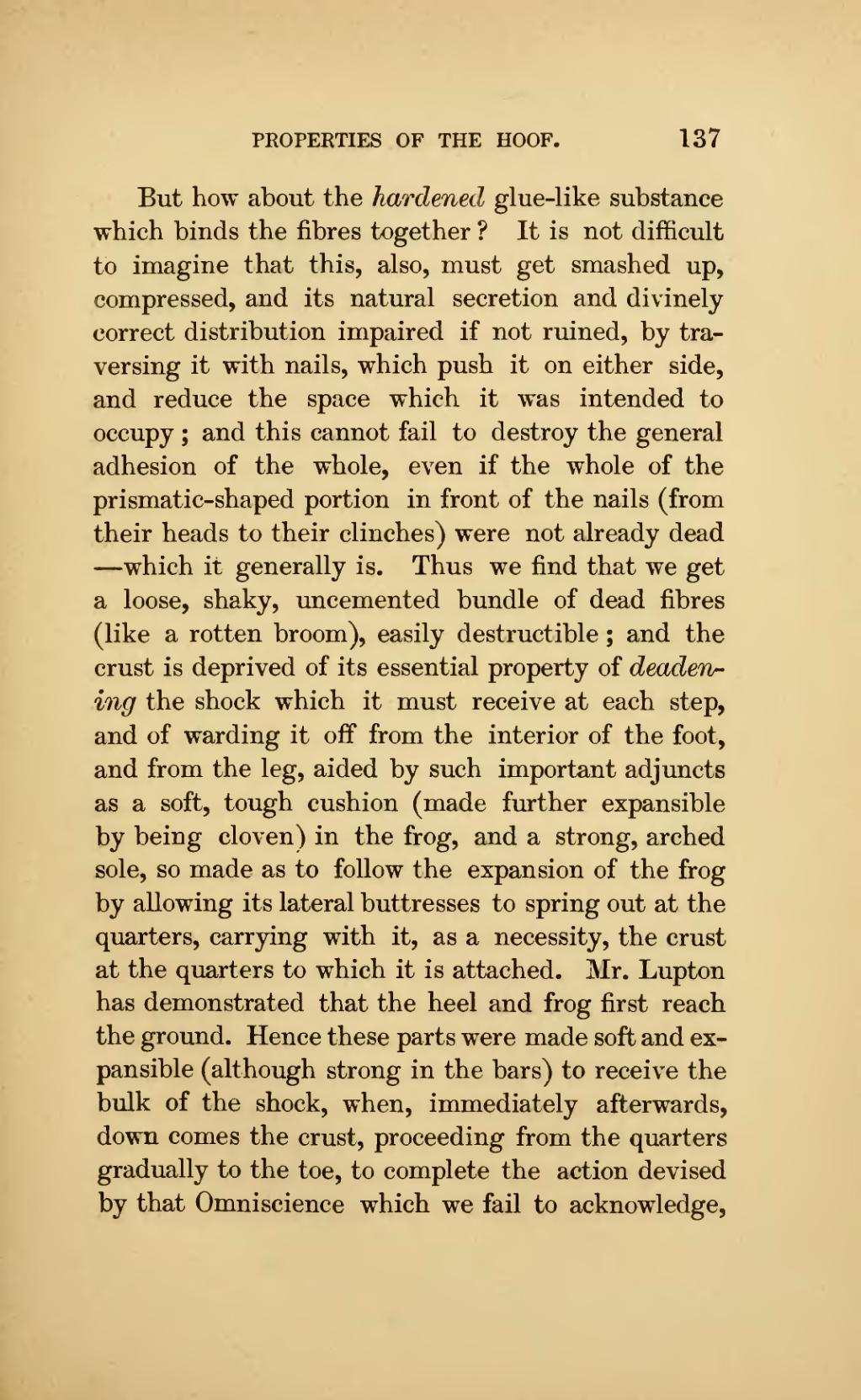But how about the hardened glue-like substance which binds the fibres together? It is not difficult to imagine that this, also, must get smashed up, compressed, and its natural secretion and divinely correct distribution impaired if not ruined, by traversing it with nails, which push it on either side, and reduce the space which it was intended to occupy; and this cannot fail to destroy the general adhesion of the whole, even if the whole of the prismatic-shaped portion in front of the nails (from their heads to their clinches) were not already dead—which it generally is. Thus we find that we get a loose, shaky, uncemented bundle of dead fibres (like a rotten broom), easily destructible; and the crust is deprived of its essential property of deadening the shock which it must receive at each step, and of warding it off from the interior of the foot, and from the leg, aided by such important adjuncts as a soft, tough cushion (made further expansible by being cloven) in the frog, and a strong, arched sole, so made as to follow the expansion of the frog by allowing its lateral buttresses to spring out at the quarters, carrying with it, as a necessity, the crust at the quarters to which it is attached. Mr. Lupton has demonstrated that the heel and frog first reach the ground. Hence these parts were made soft and expansible (although strong in the bars) to receive the bulk of the shock, when, immediately afterwards, down comes the crust, proceeding from the quarters gradually to the toe, to complete the action devised by that Omniscience which we fail to acknowledge,
Page:Horses and roads.djvu/153
Appearance

